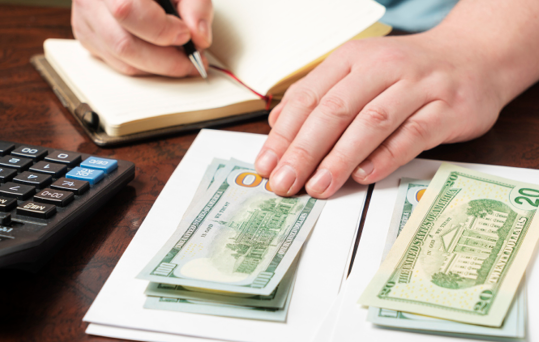Traditional Envelope Budgeting
The idea behind envelope budgeting is pretty straightforward. You take your paycheck, cash it, and divide the money into envelopes labeled by category such as “food,” “entertainment,” or “transportation.” Whenever you need to spend money, you take the necessary amount from the appropriate envelope. Once an envelope is empty, that’s it. You’ve reached your limit in that category and can’t spend any more until your next paycheck or you have to take money from another envelope, which means less for that category. The idea is to force yourself to keep to a budget.
While this cash-only approach can be beneficial, it has some pretty obvious drawbacks. First, relying on cash as your main spending method can be inconvenient. Similarly, leaving hundreds or perhaps thousands of dollars around your house or apartment for your budget can be a bit… unsettling. It’s far from the safest method for storing your money.
Modified Envelope Budgeting
The key to making the most of envelope budgeting is to modify the basic structure to best work for you. This will allow you to keep the benefits while skipping some of the drawbacks.
Tracking Expenses: Rather than actually moving your money into different “envelopes,” you’ll simply designate an amount for each category. When you buy things, you’ll account for that money coming out of its appropriate category by tracking your expenses. Apps or automatic tracking through some credit cards can make this much easier, and this is arguably one of the best ways to implement the principles of the envelope budgeting method.
Electronic Envelopes: You can try dividing your money electronically. That could mean putting your money into multiple bank accounts, only using certain cards for certain expenses, or another division method. This allows you to still easily track what funds are being used for what expenses and know when you’ve reached your set limit.
Budget Targeting: Using physical cash to buy things makes you less likely to spend frivolously. While it may be too difficult to do this with your entire budget, it can be helpful if you’re looking to cut spending in one particular area. Do you tend to overspend on entertainment or eating out? Once you decide how much you want to spend in that area, cash only that amount and draw from that “envelope” whenever you want to buy things in that category. When you’ve used up the cash, don’t buy things in that category any more until your next paycheck.
No matter how you decide to personalize envelope budgeting to best suit your needs and lifestyle, the most important thing is that it requires actively taking a look at your current financial habits and creating a plan. Armed with that plan, you can make a real difference in your budget and make your money work for you.

